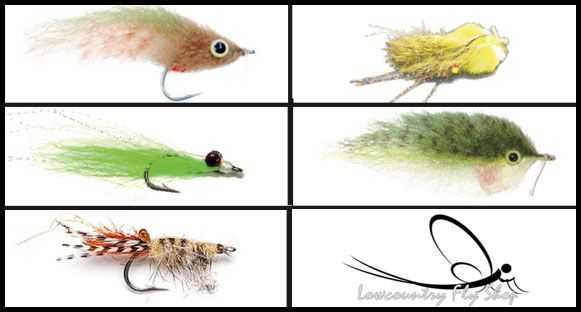It’s finally here. The clearwater of winter. Our redfish are in in schools ranging anywhere from five to 500 fish. With that many eyes, your chances can get almost comical. In winter, tactics, gear and flies all change for the fly fisherman. Fluorocarbon leaders and tippet, while not necessary most of the year, really find their place in the clear waters around Charleston. Not only are they much less visible underwater and more abrasion resistant, they also sink faster and more uniformly than monofilament leaders helping get your lightly weighted flies down in the zone faster. While the cost will sting initially, you should be able to fish the same leader all winter with only minor repairs.
Knowing which flies to use can be tricky, so let me take a few minutes to recommend some of my favorites, as well as suggest a few pointers on fishing them:
1. Clouser Minnow – No list would ever be complete without including the Clouser Minnow. Bob Clouser created this little gem in the late 80’s for smallmouth in his home waters of Pennsylvania, and it works everywhere and for everything. At a recent casting event with the 87 year-old Lefty Kreh, we asked to peek in his fly box…all Clousers. Many sizes and colors, but they were all Clousers. He has caught 87 species on them; so I won’t waste anymore time explaining this one! Cover your bases; all white or all black
are top choices.
2. EP Peanut Butters – Precious few flies have all the attributes of this fly. Its size, about 3 inches, and profile allow it to be enticing to a redfish; it has an incredible shimmering action in the water; and it is tied with synthetics to keep it durable. In addition, its only weight is the Gamakatsu hook and its big bulging plastic eyes, making it a stealthy choice for winter fish. This fly comes in many colors, which all work; however, our favorites are the black/purple, white/chartreuse or the orange patterns.
3. Shrimp flies – These flies need to be broken down into two categories: rear and forward facing. This is important since they are fished different ways. Rear-facing shrimp flies, or those that represent a fleeing shrimp, should be fished erratically and with short, fast strips. A forward-facing shrimp pattern should act natural and slowly crawl along the bottom, or remain motionless. The few, if any, shrimp remaining in shallow water will be moving slowly, if at all. Thus, I tend to fish them motionless, rod tip in the water, and keep just enough line moving to keep the line/ leader straight.
4. Everglades Special – Another EP Flies creation, the Everglades Special seals the deal when other flies won’t. It has all the best features of the Peanut Butter Flies but also has a large head that pushes more water, making it appeal to the lateral line senses of fish. It’s really unexplainable how effective it is, and I can’t imagine my life on the redfish flats without it.
5. Drumbeater – A crab/ toad/kwan hybrid whose greatest merit is its simplicity. Tied with a wide rabbit strip tail, and a quarter-sized wool body, and small lead eyes, it sinks to
the bottom where it does its work. Depending on how the fish are reacting, we generally fish these dead sticked as well. Crabs know they can’t outrun a gamefish, so they rely on camouflage and a prayer that they will stay hidden. Fiddler crabs will try to burrow, and a drumbeater lying motionless on the bottom in a red’s path is irresistible. I’d bet just the rabbit would work, but the wool gives it the proper profile. The best winter colors are black/chartreuse, black/purple, olive/pink or white/olive.
[easy-social-share]
